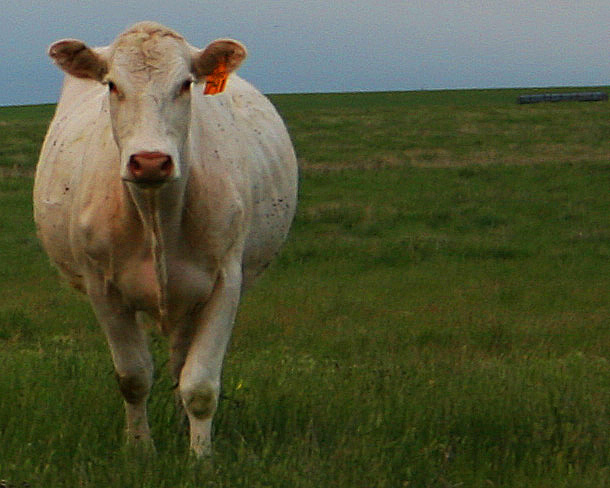It is the time of year when the body condition of cows should be on producer’s minds. The grass is short this fall, due to the lack of rain and the early frosts, so we need to be on our “A game” when it comes to our fall/winter cow nutrition. Monitoring Body Condition Scoring (BCS) is nothing novel, exciting or earth shattering, but managing it pays dividends! It is a basic management concept for herd management, however, it is often an underused tool that is critical for productivity. If you are not familiar with Body Condition Scoring, please reference this publication from the University of Nebraska: Body Condition Scoring Beef Cows.
Cattle are managed largely on a herd basis. While keeping individual animal records are applicable for many areas of management, nutrition is not one of them. We very rarely feed cows on an individual basis, likewise when evaluating BCS it should also be done on a herd basis.
When it comes to herd BCS, lets keep it simple and effective. Science has taught us, and common practices has confirmed, that a BCS 5 is optimal for productive cows. It is well understood that cows need to be at a BCS of 5 at calving to ensure they have adequate energy reserves to overcome the postpartum interval and rebreed to produce another calf within 365 days. Late summer and early fall are the ideal time to begin BCS, which is convenient, being that is when most supplementation programs begin.
–
The Strategy
Producers do not need to track the BCS of individual cows, as we do not manage/feed our cows on an individual basis, but as a herd. Therefore, it is not practical for producers to be keep individual BCS data on their cattle. Plus, that would be a lot of work. During the winter months, when it is most critical to track the BCS and evaluate our nutritional program, you are already out with the herd each time you bring supplements and hay! Plus, its to cold to stand out there with your clipboard to watch every cow eat at the hay ring! No one has time for that!
So, how do you manage your herd without BCS for each individual cow? On a bi-weekly basis, cattle producers should count the total number of cows in a BCS of 4 or lower (if a cow is at a 5 or greater, we know she is good, we don’t need to adjust). Remembering that a BCS of 5 or higher is adequate condition, therefore by identifying the percentage of our herd that is at a BCS 4 or lower, we can evaluate our supplementation programs and the overall nutritional status of our herd. This should be done for each individual group/herd of cows in your operation.
–
Tracking Percent Change
Once you calculate the total percentage of cows in the herd at a BCS of 4 or lower, track the percent change over time. This will allow you to see trends within each group. In addition, it will help to manage changes in BCS. Seeing cows begin to slip, or loose condition can be difficult, especially when you see each group of cows during the winter on a regular basis. By tracking the percentage change, producers can see those slight changes within each group of their cows.
If young and mature cows are commingled within the same herd, it can be beneficial to BCS and track them separately to evaluate their success on a given supplementation program. In addition, in cases where they are running together through the winter, you may find a large percentage of your cows that are in a lower BCS to be the younger portion of you herd. A good benchmark to target is greater than 80% at a BSC of 5+, with minimal animals at a BCS 3.
Body Condition Scoring is a great tool. While many producers check the condition (BCS) of their herds on a regular basis informally; by simply tracking the percentage change over the winter months, it is easy to evaluate your feeding program, project breed-back following calving, and manage your herds overall performance.
–
*Adapted from original article published for Progressive Cattlemen in 2019
- Big Doe Contest Returns for 2025: A Growing Thanksgiving Tradition - November 14, 2025
- UF/IFAS Extension Panhandle Cattlemen’s College Announces Scholarship Opportunity for Florida Youth – Application Deadline September 15 - August 29, 2025
- Foot Rot Prevention and Treatment for Cattle - August 15, 2025

